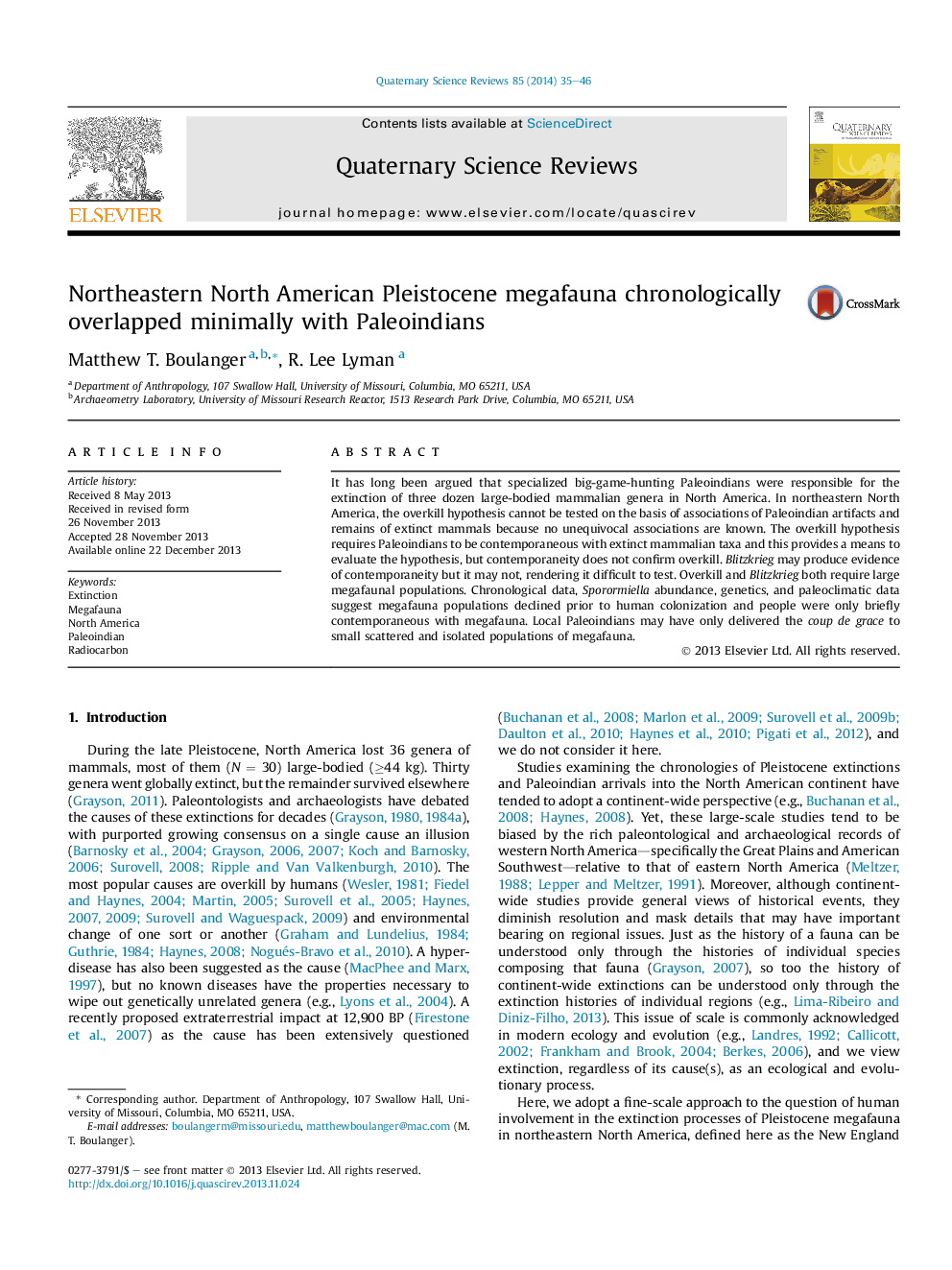| Article ID | Journal | Published Year | Pages | File Type |
|---|---|---|---|---|
| 4736691 | Quaternary Science Reviews | 2014 | 12 Pages |
•Evaluation of overkill model of extinctions in northeastern North America.•Compilation of 14C dates for extinct megafauna and early humans.•Megafauna and humans coexisted briefly.•Megafauna populations likely collapsed before human entrance into the region.•Minimal support for overkill explanation of Pleistocene extinctions.
It has long been argued that specialized big-game-hunting Paleoindians were responsible for the extinction of three dozen large-bodied mammalian genera in North America. In northeastern North America, the overkill hypothesis cannot be tested on the basis of associations of Paleoindian artifacts and remains of extinct mammals because no unequivocal associations are known. The overkill hypothesis requires Paleoindians to be contemporaneous with extinct mammalian taxa and this provides a means to evaluate the hypothesis, but contemporaneity does not confirm overkill. Blitzkrieg may produce evidence of contemporaneity but it may not, rendering it difficult to test. Overkill and Blitzkrieg both require large megafaunal populations. Chronological data, Sporormiella abundance, genetics, and paleoclimatic data suggest megafauna populations declined prior to human colonization and people were only briefly contemporaneous with megafauna. Local Paleoindians may have only delivered the coup de grace to small scattered and isolated populations of megafauna.
